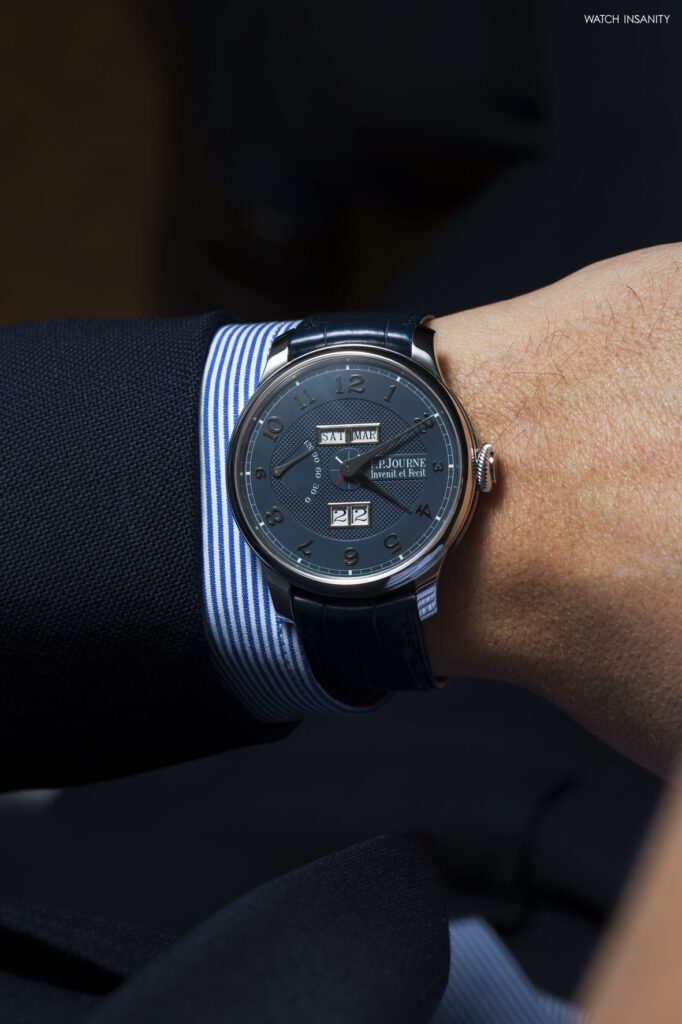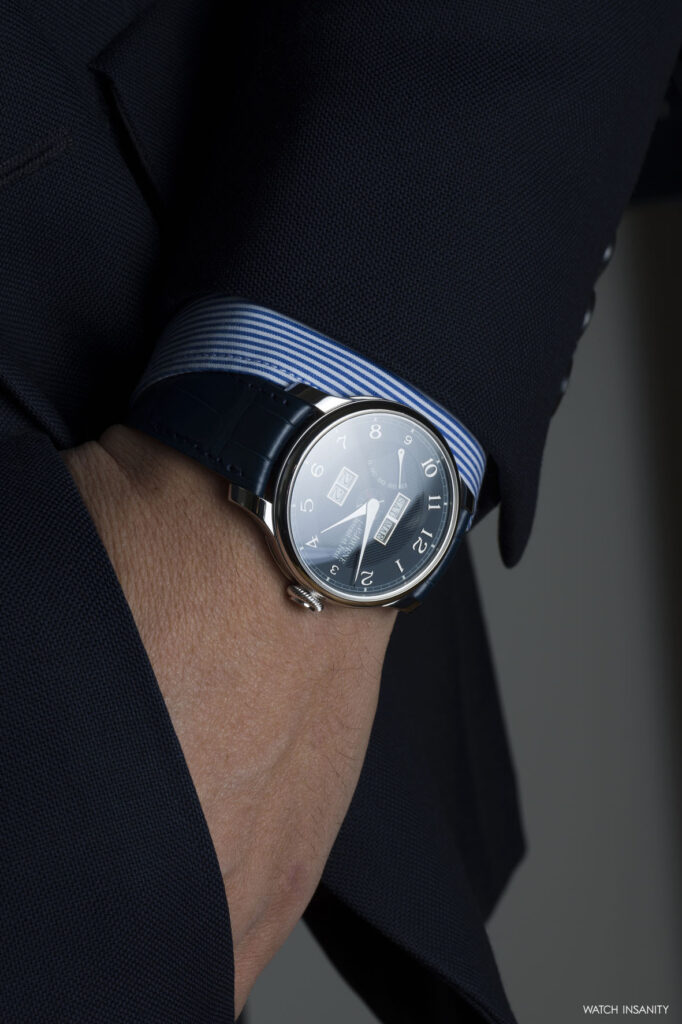F.P. Journe Quantième Perpétuel: Challenging Perfection
17 December 2021There is an important difference in meaning between the words “eternal” and “perpetual”. The first, which derives from the Latin aevum – i.e. time – indicates something that has always been, still is and will be forever. The second, from the Latin per + petere – i.e. to proceed relentlessly in one direction – indicates something with a beginning and that keeps happening. Like the days in the journey of humankind, those counted with a perpetual calendar on the wrist. Maybe with the new Quantième Perpétuel by F.P. Journe.
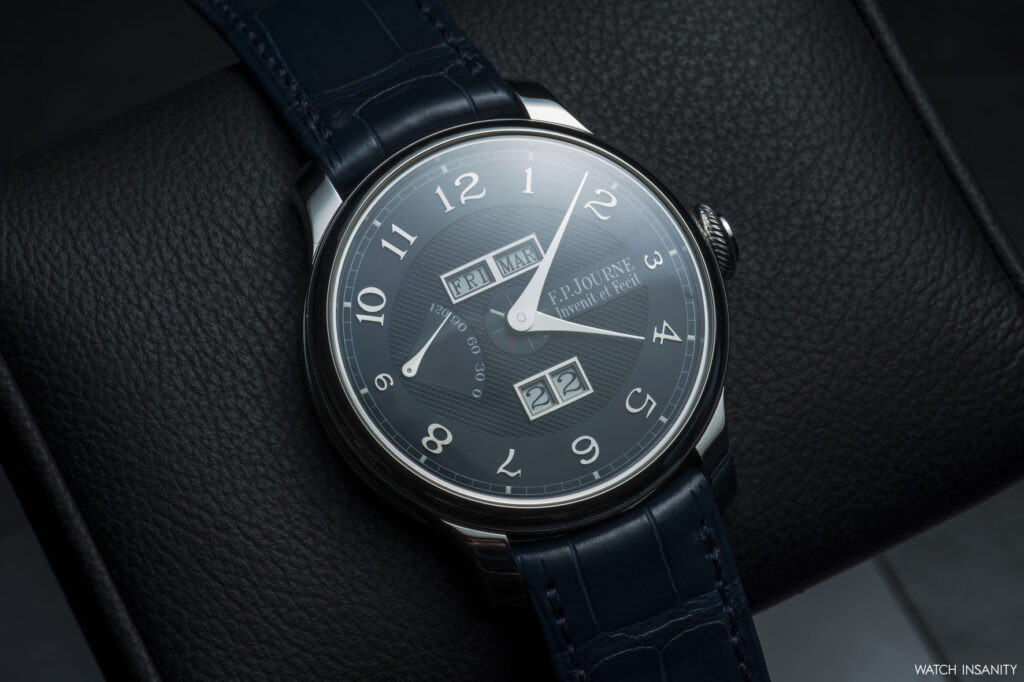
The Quantième Perpétuel has replaced the Octa Calendrier with annual calendar after entering the brand’s catalog as the tenth creation of the Octa collection. An industrial choice due to the manufacture’s limited production capacity, which thus preserves the quality of its watches.
FEW WORDS ON THE PERPETUAL CALENDAR
Both enthusiasts and, above all, watchmakers such as François-Paul Journe love the perpetual calendar complication, which allows the latter to demonstrate all their genius. But it is also a complication that comes from far back in time, from the eighteenth century, when astronomical clocks gradually gave way to those that displayed the date and often also the moon phases, a legacy from their astronomical vocation.
These watches had a calendar which required manual adjustment in months lasting less than 31 days. The challenge for the artisans of the time was first to devise a mechanism that would overcome this problem by automatically selecting the correct date, then to do the same with February 29th. That is, to create a system that recognized leap years, correctly marking February 29th and then moving on to March 1st. The basis of the perpetual calendar.
The complication makes it possible to display the exact date automatically, taking into account the length of the months and the leap years cycle. It also displays the day, month and sometimes the moon phases. As recalled by F.P. Journe’s team, this functionality requires the watch to have what they call a “mechanical memory” equal to 1461 days, the four years of the leap cycle.
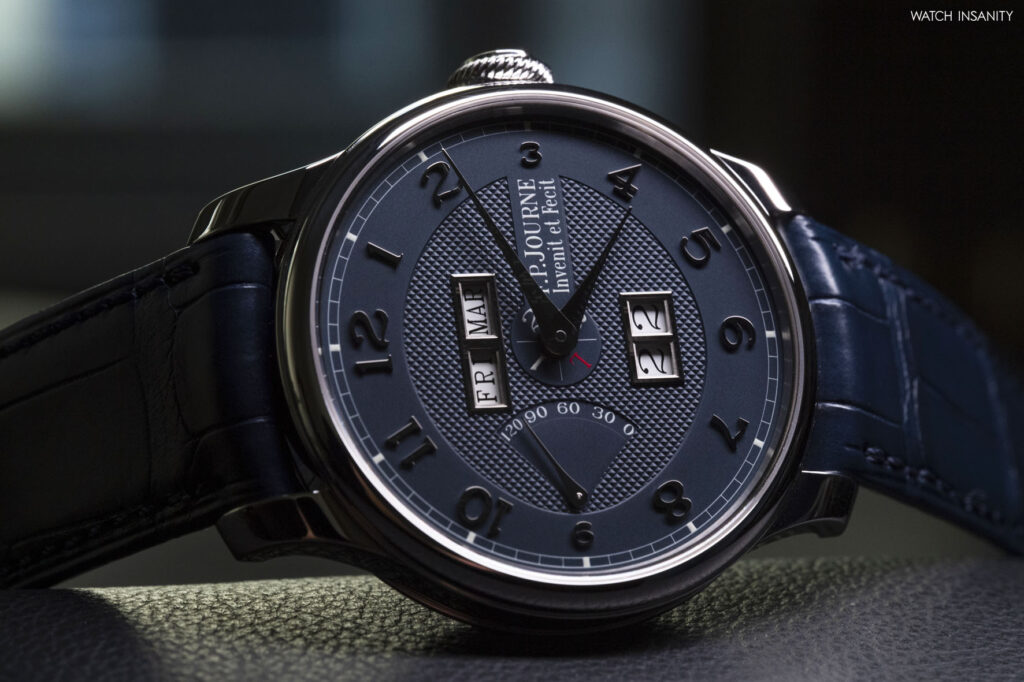
This “memory” uses a small toothed planet wheel connected to the month’s mechanism to perform a complete rotation over four years; during the fourth year, the mechanism displays February 29th before directly moving on to March 1st. Just as the moon moves around the earth, this planet wheel rotates on its own axis resting on a swivel wheel.
And that’s not quite enough. Since the Gregorian calendar, on which the measurement of our time is conventionally based, rules that the year 2100 – as three centennials out of four – will not be a leap year, current perpetual calendars will need manual correction to move from February 28th to March 1st, 2100, skipping the 29th. Not bad: it’s a problem for posterity.
QUANTIÈME PERPÉTUEL – F.P. JOURNE’S ANSWER
F.P. Journe could not resist the charm of such a complication, which he experienced not as a challenge but as an opportunity to test and further improve his watchmaking art. Opportunity that he fully grasped, if you look at the level of accuracy reached by the Quantième Perpétuel, as you can see in our pictures, made possible thanks to the collaboration of GMT “Great Masters of Time”; partner of F.P. Journe since 2007. In 2014 it has been the first retailer in Europe to open an Espace F.P. Journe, a place dedicated to collectors and enthusiasts where you can see and touch the complete watch collection.
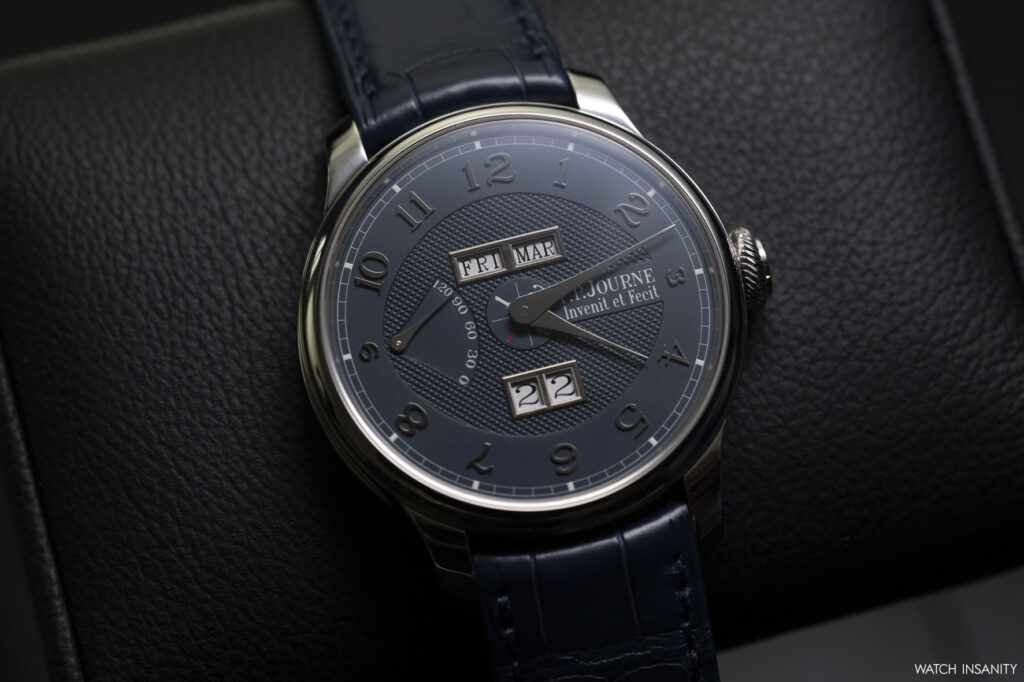
Compared to other perpetual calendars, albeit refined, F.P. Journe added two features to his Quantième Perpétuel, the expression of two commandments for him: clarity and legibility. Thanks to a dial that makes all the information needed by the wearer immediately visible.
THE DIAL’S LEGIBILITY
The dial of the F.P. Journe Quantième Perpétuel is rational and orderly, with large apertures to display the perpetual calendar’s information: one window for the day of the week, one for the month, two for the tens and units of the large date, a feature common to the other F.P. Journe watches displaying the date.
The date jump – a function that requires a lot of energy, consequently subtracted from the movement – is instantaneous. To overcome this problem, F.P. Journe has devised an ingenious system designed to accumulate energy and release it instantaneously when the date, day or month changes; and then slow it down at the end of its course.
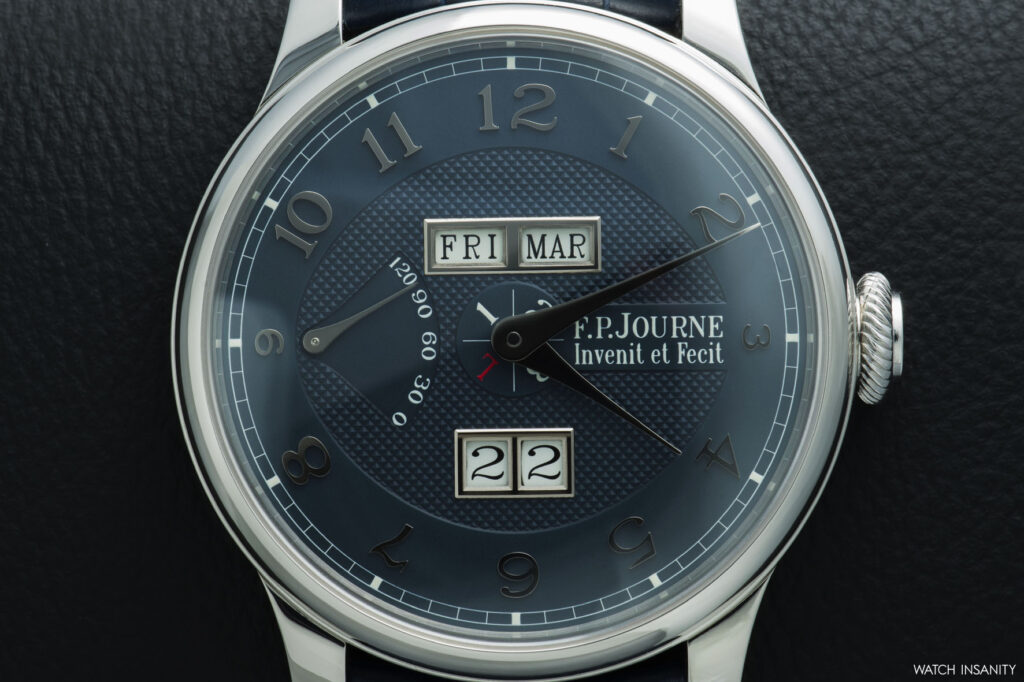
In addition to the apertures for the date, months and days of the week, the perpetual calendar is completed by the four years indication placed in the center of the dial, under the hour and minute hands; the leap year is indicated by a red L, the other three years by the numbers 1, 2, 3 made of silver. The retrograde power reserve indication is located at 9 o’clock.
The blue shade of the silver dial is stunning, enhanced by the guilloché work of the central part which contrasts with the smooth hour ring and the power reserve counter, with its concentric circles finish. The white chemin-de-fer minute track recalls the background of the date windows, while the apertures and applied numerical indexes in white gold match the rhodium-plated steel hands.
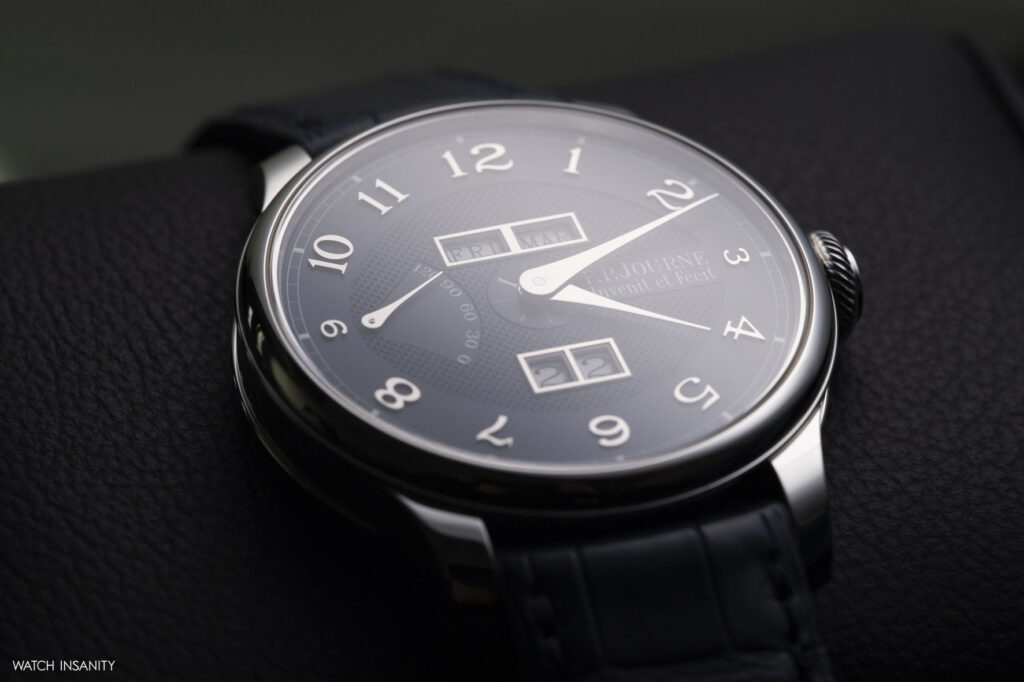
CHILD’S PLAY
We talked about F.P. Journe’s two commandments featured on the dial of the Quantième Perpétuel. Let’s add a third one, which characterizes the whole watch: ease of use. Unlike many perpetual calendars, usually difficult to adjust, almost all corrections in the Quantième Perpétuel by F.P. Journe can be made using the three-position crown.
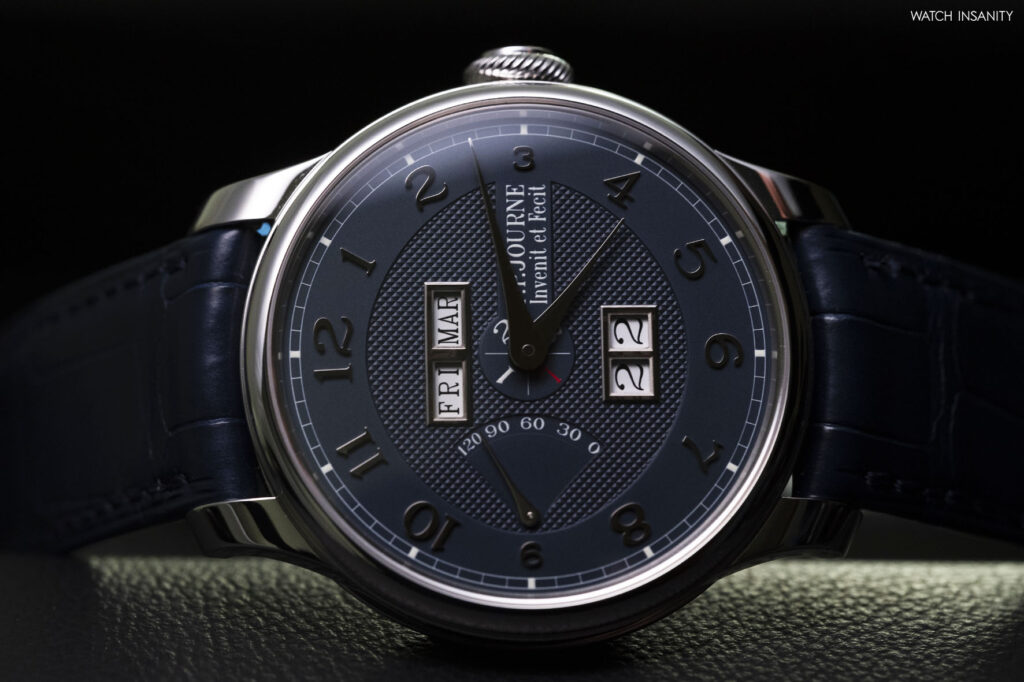
To set the day and date, or just the date, click the crown into position 1 by rotating it in one direction or the other, depending on the setting you want. A further click in position 2 allows you to adjust the time. In position 0 it is possible to manually wind the Quantième Perpétuel. A hidden corrector beneath the lug at 1 o’clock is needed only for the rapid correction of the months.
THE CASE AND THE MOVEMENT
The case, 40 or 42 mm depending on the wearer’s preference, is in platinum and alternates a satin finish on the side and a polished finish on the lugs and bezel. Only 10.85 mm, its thinness and short lugs make the timepiece pleasantly wearable even on wrists that are not particularly large. And the case holds this watch’s star feature: the automatic movement (whose development was based on the caliber 1300.3) in 18K rose gold, like that of all the precision chronometers produced by the brand.
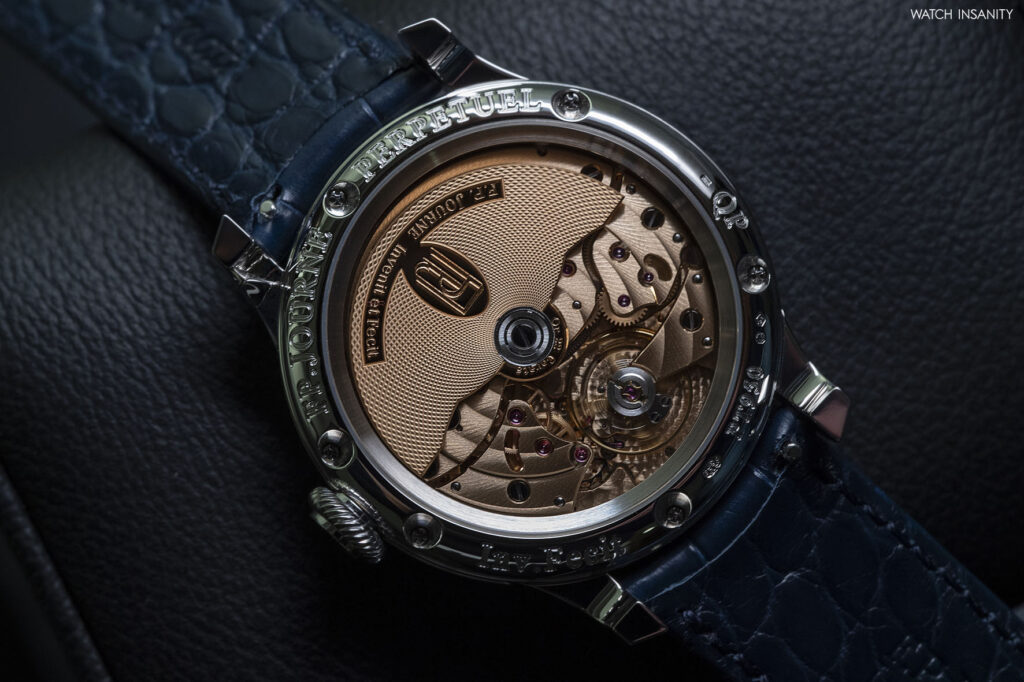
Visible through the sapphire crystal caseback, the movement beats at 21,600 vibrations / hour and is only 5.90 mm thick. More than for the incredible technical solutions that animate the perpetual calendar, the caliber of the Quantième Perpétuel by F.P. Journe catches the eye for its finishes, as excellent as the mechanics. The off-center rotor in 22K 5N gold (with its considerable specific weight which helps the movement to recharge faster) is decorated with a circular guilloché motif while the bridges, in 18K red gold, have a circular Côtes-de-Genève finish.
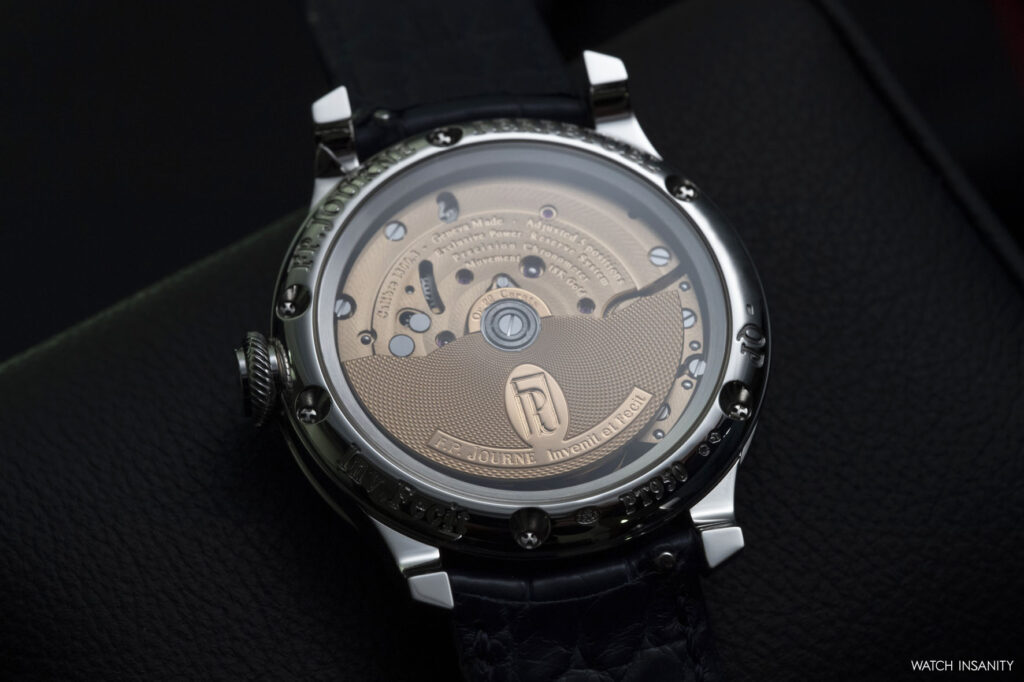
Even the smallest parts of the caliber have been carefully refinished by F.P. Journe: the screw heads are polished and have chamfered slots, just as the steel components are hand-polished and chamfered. Automatic winding takes place through the unidirectional movement of the rotor, made possible by an autoblocant ball bearing system.
NOT ONLY BLUE
The blue Quantième Perpétuel belongs to the Boutique Collection and, in addition to our shooting’s star reference, it is also available with a five-row platinum bracelet or with a gold case and alligator strap, or a five-row gold bracelet. The reference with a whitened silver dial is part of the Classique Collection.
In short, once you understand the difference between “eternal” and “perpetual”, wearing the Quantième Perpétuel by F.P. Journe is a nice way to enjoy the passing of time. Of course, there would also be the adjective “perennial” but, as you can guess from the sound of the word, we will talk about this when talking about an annual calendar. (Price €. 82.000)
By Davide Passoni

